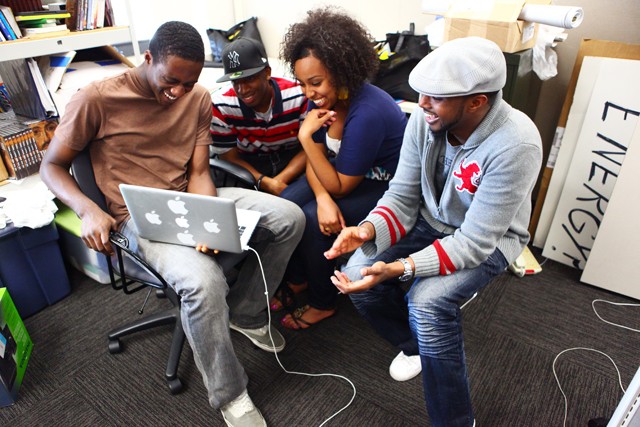The second floor of Coffman Union is dedicated to the University of MinnesotaâÄôs student groups. However, out of about 700 registered groups on campus, only 29 of them have office space in Coffman, and it is possible that number will decrease further next year in response to complaints that the process is unfair.
The Student Unions and Activities Board of Governors is in the process of reviewing how the 26,000 square feet of space on the second floor of Coffman is used. The board has identified four solutions, including altering CoffmanâÄôs second floor for open use by student groups or making room for a resource center available to everyone.
Groups displaced by the changes could be forced to pay for alternative space off campus when their leases end next year.
Lashowna Dukes, president of Voices Merging, a multicultural artist collaborative, said the space allocation came as “a slap in the face.”
The students received a survey that seemed to be targeting culture centers, she said, and they didnâÄôt understand how it would affect their groups.
The issue began last spring, when a variety of student groups that didnâÄôt get office space in Coffman complained to the 2009-10 Student Services Fees Committee about the unfairness of the second-floor spacing.
Paul Freeman, former chairman of the Student Services Fees Committee, sent letters to Vice Provost Jerry Rinehart to address the space allocation issues.
He first wrote in March 2010, according to an Oct. 1 message from the president of the SUA Board of Governors. Freeman received a response dated April 23. He then wrote a second letter because, the letter stated, he did not think the committeeâÄôs questions had been answered. In response, Rinehart tasked the board of governors with re-evaluating the second-floor office space.
The benefit to having an office inside Coffman is that groups do not have to arrange or pay for office space off campus. In his second letter, Freeman questioned whether this favored groups with Coffman space, since their smaller budgets would be examined less by the fees committee.
“A long-standing tradition of the SSFC is that larger budgets receive more scrutiny than smaller budgets, putting off-campus organizations at a disadvantage,” Freeman wrote in the letter.
There is little turnover in Coffman office space each year, but about 40 to 50 groups apply. This includes the groups that currently possess space, which must reapply each year.
“Realistically we canâÄôt serve all groups that apply,” board of governors President Joel Livingood said.
The board is considering several options for what to do with that second-floor space. Some of the more talked-about possibilities, according to Livingood, are creating a resource center for student groups to use or keeping it just the way it is now.
There are other options being considered, but the new plan will not come into effect until September of next year, when the current culture center office leases expire.
A survey was issued to the officers of all registered student groups Oct. 1, asking them about CoffmanâÄôs second-floor space.
Questions in the survey included whether their student group currently possessed office space on the second floor or elsewhere and whether their group would benefit from having other amenities on the second floor.
Dukes said the wording of the surveys was going to make the results misleading. She said a question asking whether students would like printing and marketing services on the second floor âÄî a service that would be available with the resource center âÄî was intentional.
Everyone would say they want free printing, she said, but that doesnâÄôt mean that the culture centers should lose their space for it.
The Office of Measurement Services will be analyzing the data from the surveys to present to the board Oct. 14. Some group members, including DukesâÄô, think that is not enough time.
“If I donâÄôt think the board can make a sound decision in the period of time weâÄôve allotted, we will absolutely ask for an extension,” said Livingood in response.
The board will also be hosting open forums Oct. 18 and 19 to discuss the issue before making its formal recommendation Nov. 11.
Livingood and two other board members will be taking trips to visit Ohio State University and the University of Michigan to look at their resource centers and get feedback from their students. This will be funded by SUA.
To Dukes, open forums and surveys arenâÄôt going to solve the problem.
“This is our safe space,” she said.











